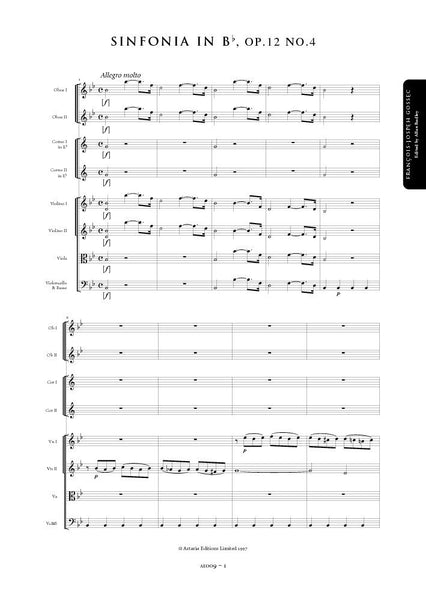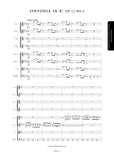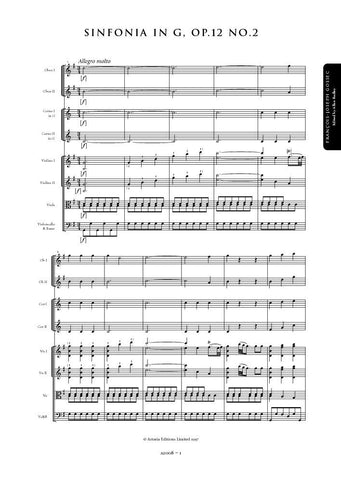Description |
Gossec, Francois-Joseph (1734-1829)
|
||||||||||||||||||
Audio sample |
|||||||||||||||||||
Details |
The present work was published by Venier in 1769 as the fourth in a group of six symphonies (Op.12) and enjoyed a sufficiently strong level of popularity to be issued also by Brault, Bremner (1772) and Boyer. The work also survives in an attribution to Franz Ignaz Beck, a Stamitz pupil and celebrated symphonist who also spent much of his career working in France. Anneliese Callen, the compiler of the standard thematic catalogue of Beck symphonies, accepted the work as genuine and on this basis it was first published by Artaria Editions as part of its complete Beck symphonies series. This edition - reprinted here with the corrected attribution to Gossec - was based on a set of manuscript parts preserved in the Archbishopric Castle Music Archive Kromeriz in the Czech Republic under the shelfmark IV-A-20: 'Synphonia in B / / Violino Primo / Violino Secondo. / Viola di Alto. / Oboe Due / Corni Due in Eb / Clarini Due in B / e / Violone / Del Sigre Francesco Beck'. All the parts are in the same hand and have been signed by the copyist[?] Lohr who also copied the parts for IV-A-19 [Beck (recte Gossec) Sinfonia in G, Op.12 No.2]. Although perfectly legible, the parts are not very cleanly copied and contain a considerable number of errors and omissions. Lohr incorrectly directs the horns to be crooked in Bb on the title pages of each of the parts; this is later rectified at the head of each movement. The [ad libitum] clarini parts listed on the wrapper are missing but their absence is not critical to the reconstruction of the score. There are many instances of clarino horn substitutions in manuscript sources in this archive and it may be that the wrapper was intended to read 'Corni Due in E flat ossia Clarini Due in E flat' but was incorrectly written by the copyist (not Lohr whose hand is quite different). If this were the case, independent clarino parts probably never existed for the work. The style and notation of articulation and dynamic markings have been standardised throughout, and, where missing, markings have been reconstructed from parallel passages. These are indicated by the use of dotted slurs or brackets where appropriate. Like most eighteenth-century sources, the Kromeriz parts are inconsistent in their notation of appoggiature; these too have been standardised to minimise confusion. Obvious wrong notes have been corrected without comment; editorial emendations with no authority from the source are placed within brackets. Allan Badley |
||||||||||||||||||
Score Preview |
Loading...
Error







